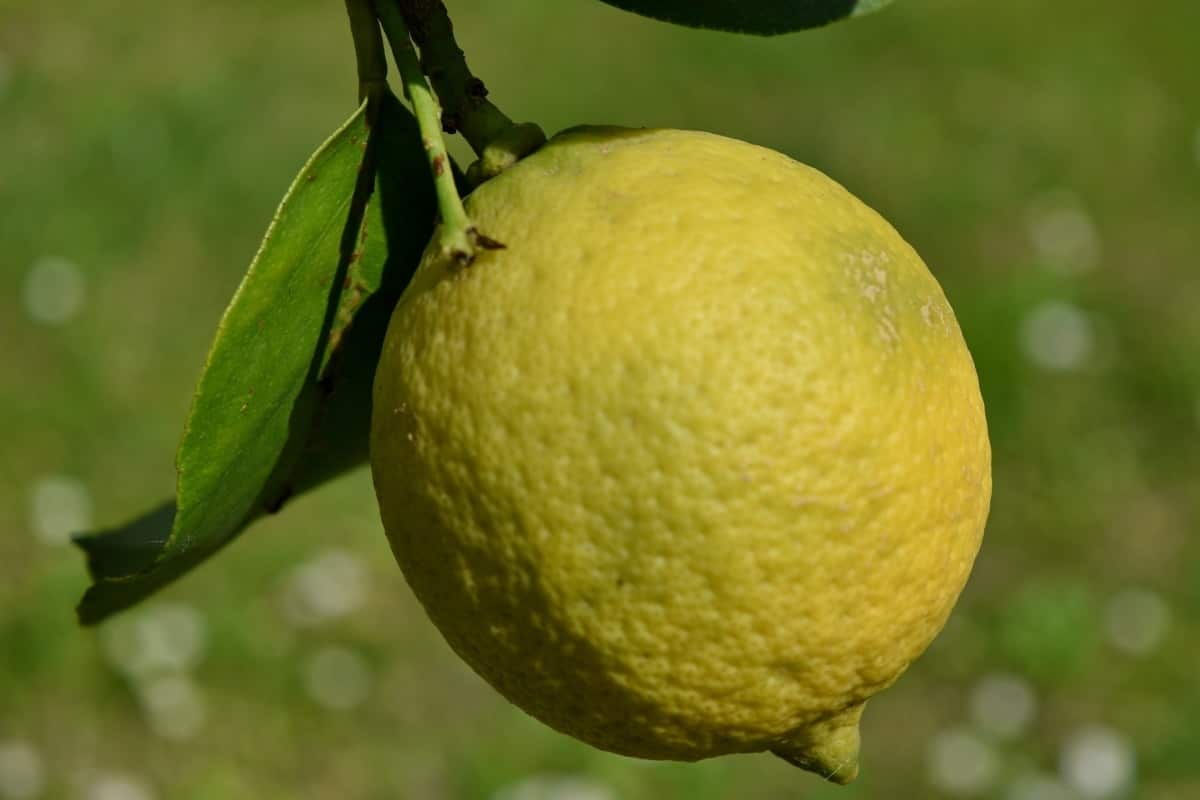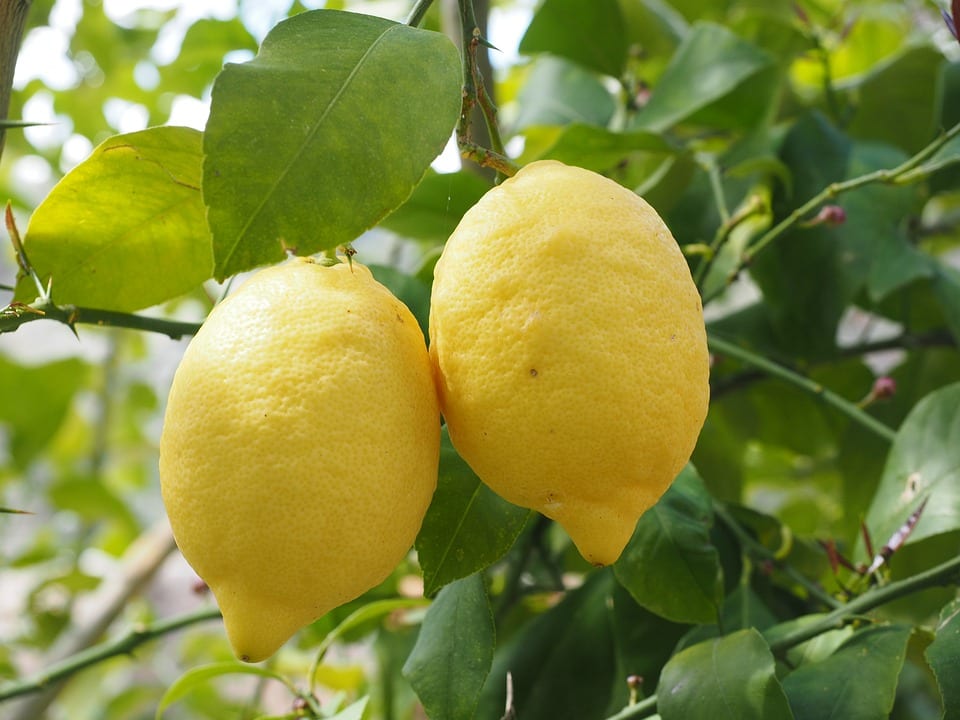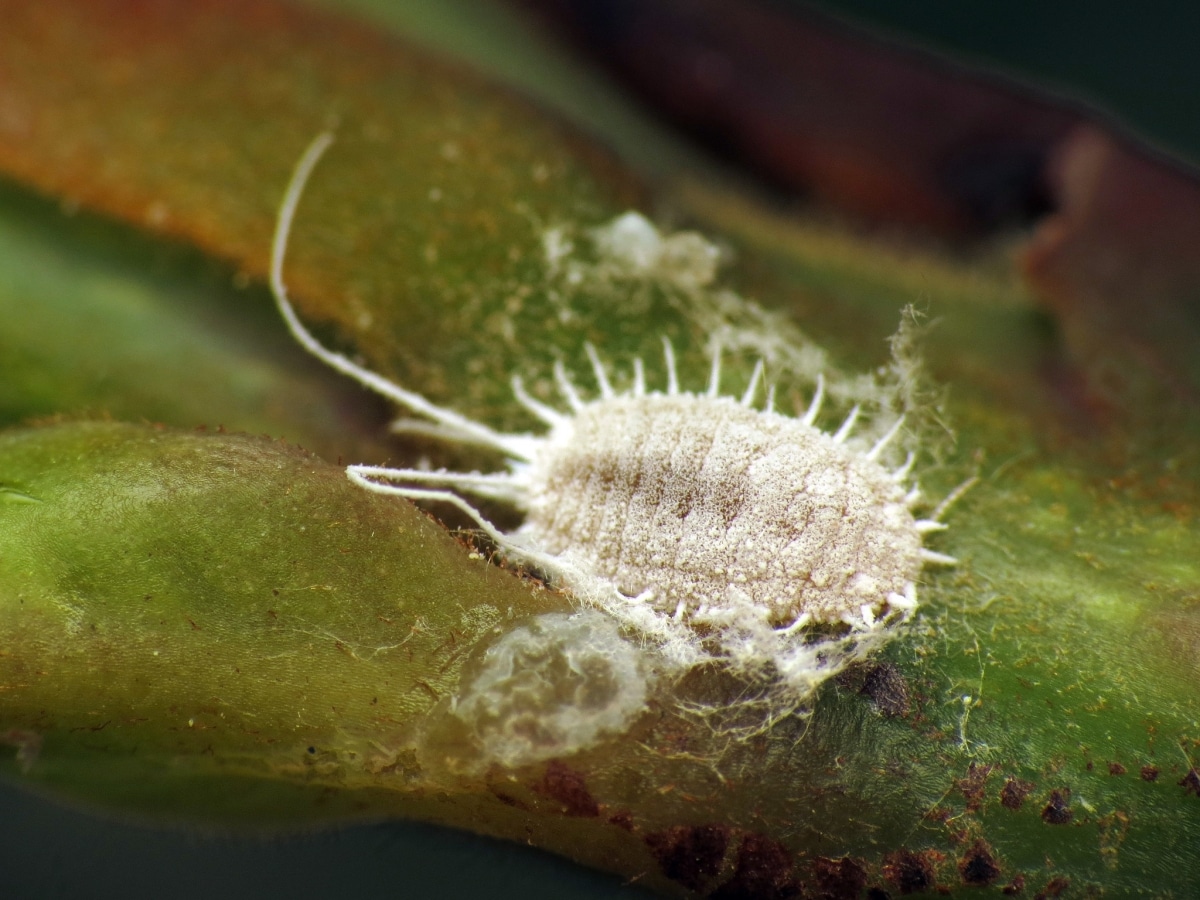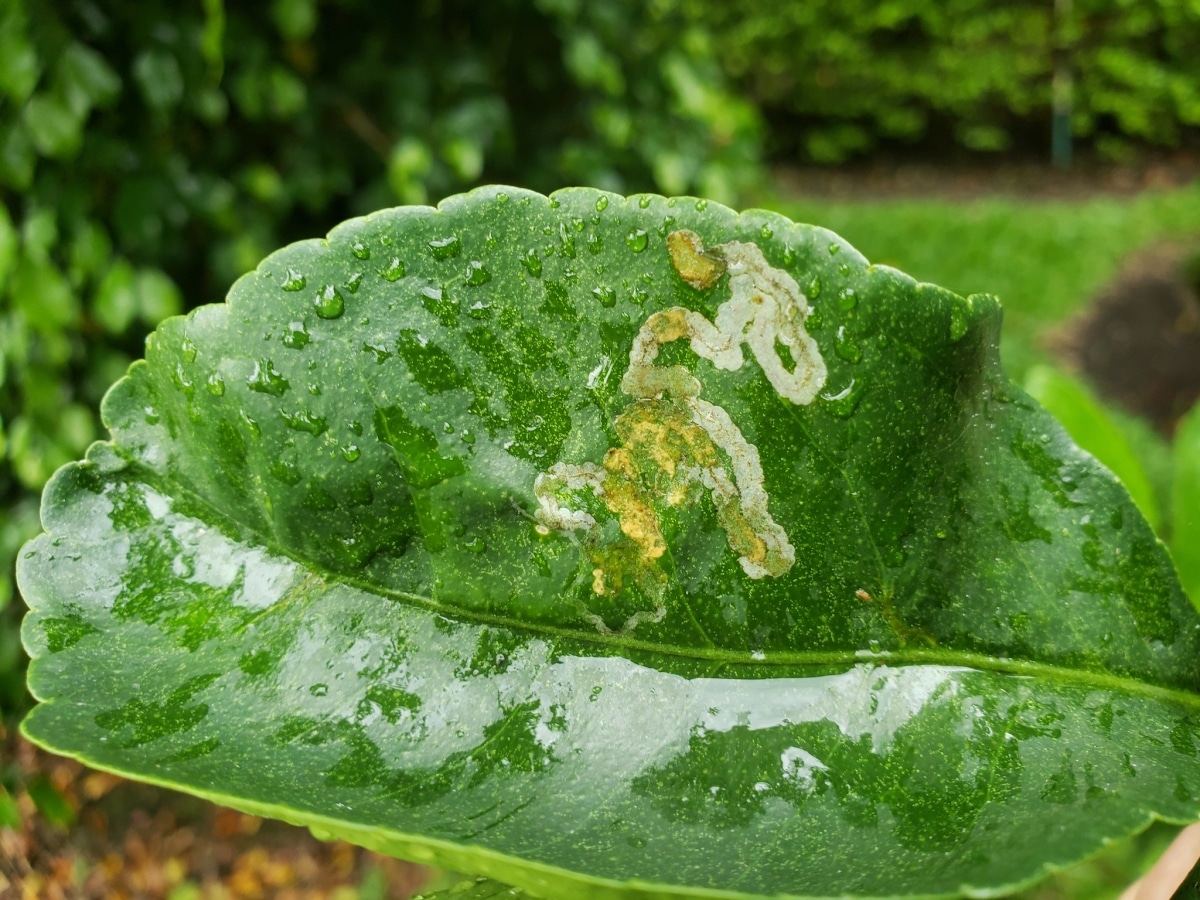
The lemon tree is a perennial fruit tree and very productive. In addition, it smells good, whether or not it is in flower, and it can live in pots - large ones, yes - almost as well as if it were planted in the ground. However, It is a plant that usually has the occasional pest and/or disease throughout the year. We are not saying that it is not resistant, but it is true that it does not hurt to check its leaves from time to time to detect any signs of problems in time.
And one of those signs that has to make us suspect that something is not going as it should is finding wrinkled pages. When they wrinkle or fold, it is because the plant is sick or is not being cared for as it should. We will explain in detail the causes and how to correct it.

Why do lemon tree leaves wrinkle? This can happen for various reasons, one of the most frequent being pests, and specifically cochineal. But there are more causes that you should know.
Mealybugs

Image - Flickr / Katja Schulz
A single mealybug (or a few) does not cause the leaves to wrinkle. The problem is that when one appears, after a very short time it is joined by many more. I couldn't tell you how long it takes, because it will depend a lot on the weather, but you do have to know that in summer, for example, as the temperatures are high -which is just what they need to stay very active-, they can spend no more than a few hours or days; however, the rest of the year they will take longer to cause damage to the lemon tree.
Therefore, we have to take a look at the underside of the leaves out of habit, because that is where they will hide, once or several times a week, depending on what season we are in. Now, how will we know if what it has is mealybugs and not something else? Identifying the mealybug itself.
And for this, you must know that although there are many different types, the ones that most harm the lemon tree (and citrus fruits in general), are:
- Cottony mealybug: as its name suggests, it has the appearance of cotton, a cotton ball to be exact. It is easy to remove it by hand, although we recommend putting on gloves before doing so so as not to stain yourself.
- San Jose louse: they are like limpets. They are so different from the cottony ones that it is hard to believe that they are mealybugs too, but they are. They are very small in size, about 0,5cm or less, and have a brownish body. They are easily removed with a fingernail.
The problem is that even if you remove them once, they will reappear. In fact, it is necessary to treat the tree with an insecticide to eliminate them. The question is, what is the best product to combat mealybugs? I have been involved in the world of gardening since 2006, trying different products and remedies, and I can say that what has worked best for me is diatomaceous earth, of which I leave you a video and a link in case you want to buy it.
Now, if you want to try other methods, I would recommend an anti-cochineal insecticide like this of SIPCAM. But follow the instructions for use, otherwise the remedy would end up being worse than the disease.
Lemon moth or lemon prays
The lemon tree moth is a micro-lepidoptera that, in its adult phase, feeds on the nectar of flowers, so they do not pose any risk to the tree, but in its larval phase it does so from the organs of said flowers and leaves, where it digs galleries and can cause them to end up wrinkling.
These larvae are very small and green in color, and have a very thin body. And like many other insects, they favor the heat. In fact, in warm regions, such as the Mediterranean, we can find adults and larvae almost all year round.
How is it removed? The most recommended method is placing sticky yellow trapsas these, on the branches of the tree and near it. Thus, the moths will be attracted to these traps, and when they reach them they will not be able to detach themselves.
lemon miner

Image - Flickr / Scot Nelson
El lemon miner It is a kind of small butterfly that, in the larval stage, it feeds on the leaves as it excavates galleries in them. By doing so, not only do you see lines on the foliage, but they also take on a characteristic shine. Therefore, if we suspect that it has this pest, we must observe both sides of the leaves, and not just the upper side, since otherwise we could make the mistake of thinking that there is nothing that needs to be solved.
As soon as we see larvae, or galleries, we can apply ecological insecticides such as neem oil, or chemicals such as this.
Lack of water
The lemon tree is not a plant that can live without water for a long time, which is why it has to be watered whenever necessary. In summer, as the soil dries out much faster than in winter, it will need to be watered more often. However, What are the symptoms of dehydration of this fruit?
- Folded or wrinkled sheets
- yellow new leaves
- The land looks and feels very dry
They do not always appear all at once; It will depend on how serious the tree is, but If there is something that can make us suspect that it lacks water, it is the first symptom: wrinkled leaves. These will also be green, that is, healthy. Luckily, there is an easy solution: water.
You have to pour water until the soil is soaked well; and if it's in a pot, the water should run out of the drainage holes. And from then on, it should be watered more often.
We hope that your lemon tree has healthy leaves again.